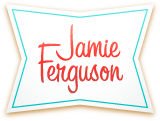Happy and gay
Tuesday evening I finished writing a short story in which the main character is a gay. Coincidentally, the next day Chuck Wendig published a post on his blog called DEAR GUY WHO IS MAD BECAUSE I WROTE A GAY CHARACTER IN A BOOK. I laughed out loud at his post, and while I haven’t read…
